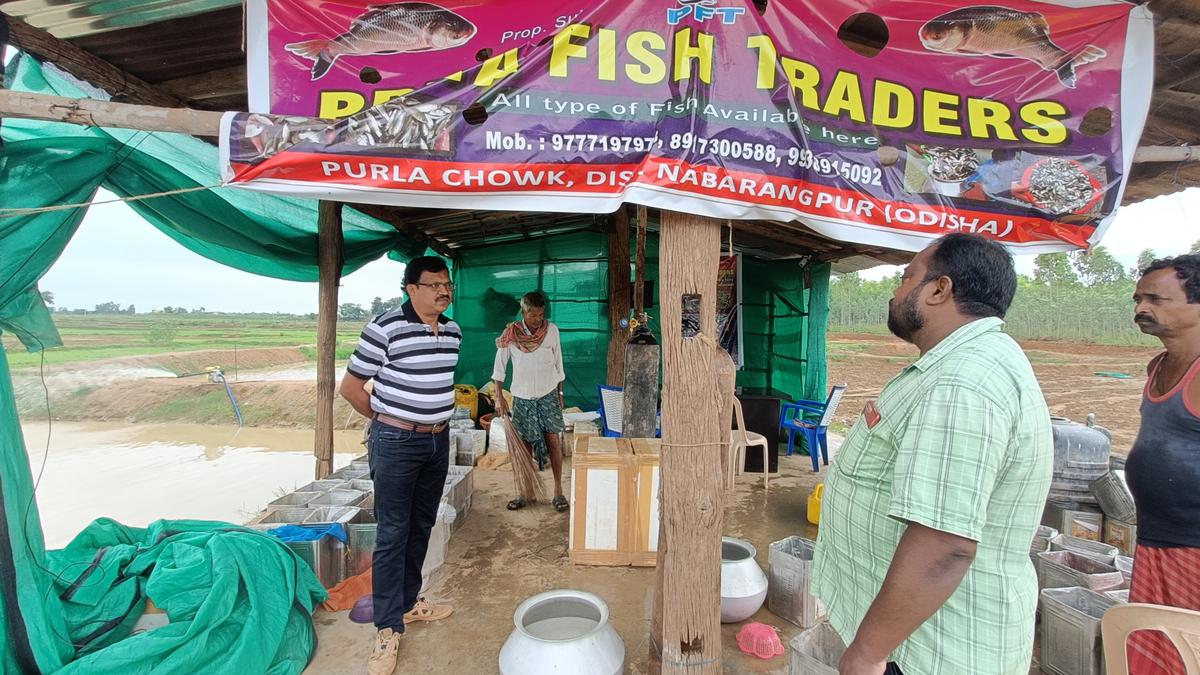
In five years, top science labs create a splash with pisciculture in Nabarangpur, one of India’s poorest districts
The Hindu
Nabarangpur, Odisha, once dependent on Andhra Pradesh for fish, now has a thriving pisciculture value chain, thanks to the efforts of CIFA and 11 other ICAR-affiliated institutes. This is a unique experiment in India where top scientific labs are focusing on grassroots development. The value of the fish market in Nabarangpur has grown to ₹250 crore, providing opportunities for people to participate in pisciculture and build a sound business ecosystem.
Nabarangpur, a southern Odisha district that was entirely dependent on neighbouring Andhra Pradesh for the supply of fish till a few years ago, is teeming with pisciculture activity now, from maintaining brood fish to seed production, and from fish food production to live fish markets, encompassing the entire pisciculture value chain.
The turnaround has been made possible through the efforts of the Central Institute of Freshwater Aquaculture (CIFA), a research institute under the Indian Council of Agriculture Research (ICAR), which has actively shared its laboratory knowledge with the general public.
CIFA is part of a consortium of 11 famous institutes affiliated to the ICAR, including the Indian Council of Medical Research, the Council for Scientific and Industrial Research (CSIR), the Department of Biotechnology (DBT), that have been working for the socio-economic development of Nabarangpur, dubbed one of the poorest districts of the country. The central laboratories are variously involved in promoting employment generation opportunities in food processing, value addition for crops, horticulture, and the poultry sector.
This is probably the only unique experiment in India where all top scientific laboratories, which have often faced criticism for not putting their laboratory knowledge to use in grassroots development, have focussed their attention on uplifting the socioeconomic conditions in Nabarangpur.
“Prior to 2018, the fish market [in Nabarangpur] was nearly non-existent. About 15 to 20 truckloads of fish from Andhra Pradesh every week would cater to the demand for fish in Nabarangpur. Changes were noticed when we started initiating people into aquaculture,” Nagesh Barik, Principal Scientist, CIFA, who has led the institution’s intervention in Nabarangpur, said.
Nabarangpur, a primarily vegetable-growing district, showed little inclination for pisciculture in the past. It was the water bodies dug under the Mahatma Gandhi National Rural Employment Guarantee Act (MGNREGA), and watershed programmes, that created massive ground for pisciculture.
Systematic intervention from CIFA has resulted in the establishment of an entire value chain. Six aquaculture clusters around Taragaon, Kusumjhar, Karchhamal, Kapur, Umerkote and Chandahandi have been developed, besides the establishment of high quality broodstock for seed production of rohu, catla, common carp, Amur carp, silver barb and penga fishes.













